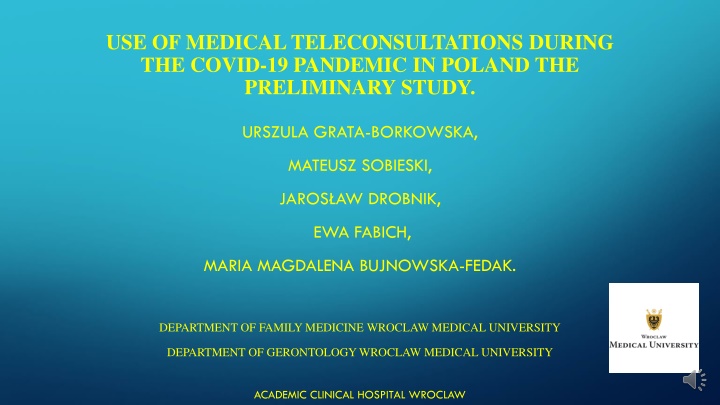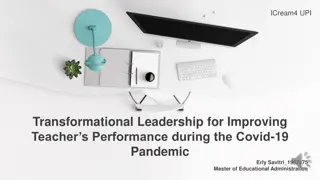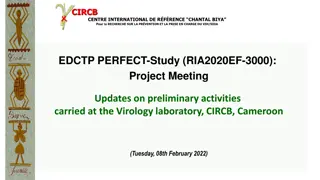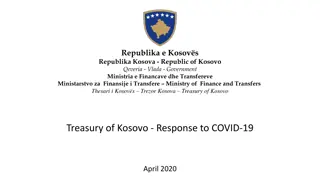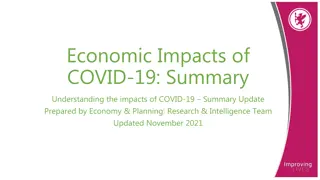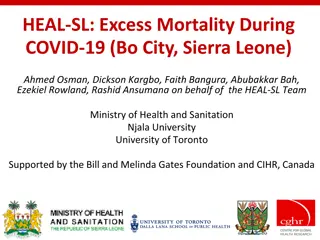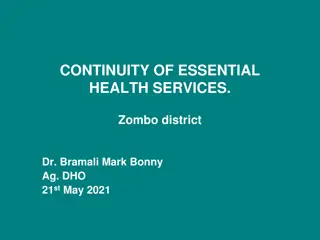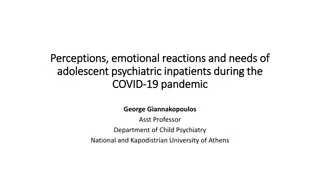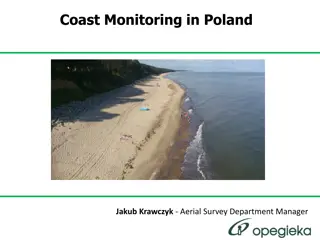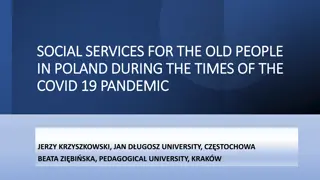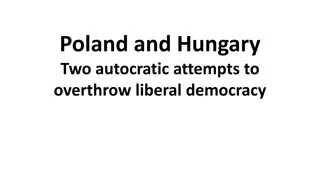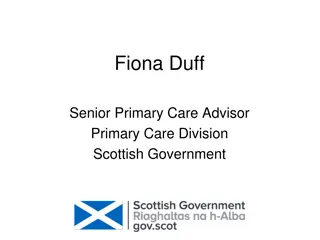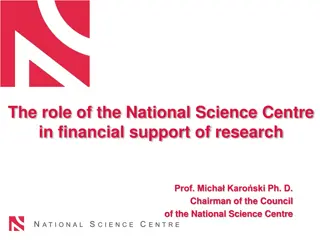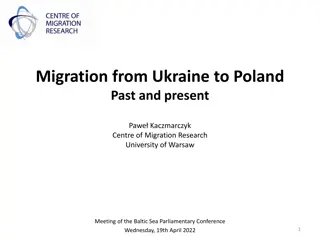Medical Teleconsultations During the COVID-19 Pandemic in Poland: Preliminary Study
This study aimed to evaluate the usefulness of medical teleconsultations as a tool for primary care physicians during the COVID-19 pandemic in Poland. Results showed that many doctors prefer teleconsultation as their primary working tool, foresee its continued use post-pandemic, and find it effective in daily work. While the main advantage is limiting the spread of COVID-19, the primary disadvantage is the inability to personally examine patients. Overall, teleconsultations have been well-received by the majority of respondents.
Download Presentation

Please find below an Image/Link to download the presentation.
The content on the website is provided AS IS for your information and personal use only. It may not be sold, licensed, or shared on other websites without obtaining consent from the author.If you encounter any issues during the download, it is possible that the publisher has removed the file from their server.
You are allowed to download the files provided on this website for personal or commercial use, subject to the condition that they are used lawfully. All files are the property of their respective owners.
The content on the website is provided AS IS for your information and personal use only. It may not be sold, licensed, or shared on other websites without obtaining consent from the author.
E N D
Presentation Transcript
USE OF MEDICAL TELECONSULTATIONS DURING THE COVID-19 PANDEMIC IN POLAND THE PRELIMINARY STUDY. URSZULA GRATA-BORKOWSKA, MATEUSZ SOBIESKI, JAROS AW DROBNIK, EWA FABICH, MARIA MAGDALENA BUJNOWSKA-FEDAK. DEPARTMENT OF FAMILY MEDICINE WROCLAW MEDICAL UNIVERSITY DEPARTMENT OF GERONTOLOGYWROCLAW MEDICAL UNIVERSITY ACADEMIC CLINICAL HOSPITAL WROCLAW
AIM: The aim of the study was to assess the usefulness and suitability of medical teleconsultation as a valuable working COVID-19 pandemic. tool for primary care physicians in the The following research hypotheses were made: 1. For most primary care physicians, teleconsultation is the main working tool. 2. Most family doctors will use teleconsultations in their work after the pandemic COVID-19. 3. According to family doctors, teleconsultations are an effective and reliable tool in everyday work.
MATERIALS AND METHODS: The preliminary study involved 219 primary care physicians from Lower Silesia. The research was based on the specially designed e-questionnaire which were distributed in the online form among all primary care doctors members of Polish Society of Family Medicine.
MATERIALS AND METHODS: The anonymous survey used in the study consisted of a metric including age, gender and any additional specializations performed by the respondent, and 10 questions regarding the respondent's attitude towards teleconsultations. All respondents were doctors; 96% (N=210) of them were family physicians.
SEX AND AGE OF RESPONDENTS: AGE SEX 24% 40% 60% 76% MALE FEMALE 25-40 YEARS 41-60 YEARS
RESULTS: Over 70% of respondents (N=153) prefer teleconsultation as their primary tool for working in the coronavirus pandemic. 46% (N=101) of the respondents used teleconsultation as a work tool before the COVID-19 pandemic. Almost 90% (N=197) of respondents indicated that the main advantage of teleconsultation is limiting the possibility of the spread of the COVID-19 pandemic. Only 4% (N=8) indicated the possibility of giving advice to more people at the same time.
RESULTS: The most frequently reported disadvantage of teleconsultation is the inability to examine the patient personally and reliably verify his condition - as many as 80% (N=175) of respondents encounter this problem. 10% (N=22) of respondents complain about unreliable information provided by patients themselves. Only 1% (N=2) believe that teleconsultation has no disadvantages.
RESULTS: Most Polish family doctors intend to use teleconsulation after the pandemic is over - as many as 97% (N=212) of doctors expressed a positive attitude towards continuing work using this method, of which 54% (N=118) of respondents intend to use teleconsultation frequently, and 43% (N=94) - occasionally. 1% (N = 2) do not intend to use teleconsultation at all. 2% (N=4) have no opinion on it.
RESULTS: Frequently reported problem by doctors is the inability to confirm the identity of the person being teleconsulted. The vast majority (65%) (N=142) of physicians consider it sufficient to ask for their name and surname. Over 20% (N=44) of respondents use a request for a PESEL number as a form of verification, which is the national identification number used in Poland that identifies just one person and cannot be changed to another one.
SIGNIFICANT DIFFERENCES EMERGED IN TERMS OF TIME SPENT TELECONSULTATION: TIME OF TELEVISITS 18% 38% 44% LESS TIME AS MUCH AS MORE THAN
FIGURE: PERSONAL ASSESMENTS OF THE EFFECTIVENESS AND CREDIBILITY OF TELECONSULTATION OF POLISH PCPS.
CONCLUSIONS: Despite the fact that a large percentage of family doctors had the opportunity to use teleconsultation before the COVID-19 pandemic, the inability to conduct traditional visits forced their use by most doctors. According to the respondents, limiting the possibility of spreading COVID- 19 infection is the main advantage of teleconsultation. Most Polish family doctors intend to continue teleconsulting even after the pandemic ends. The main risk is the inability to examine the patient and reliably verify his health. However in their opinion, teleconsultation is characterized by good effectiveness and credibility.
CONCLUSIONS: The main problem may be the discrepancy between the needs of patients and doctors - the first to use this form of consultation are often satisfied; However, most Poles still prefer stationary visits. Changing this preference will require physicians to adapt to patients' needs more closely and to try to circumvent the limitations of telemedicine.
THANK YOU FOR YOUR ATTENTION.
